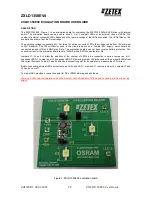
Motherboard Installation
Page 3
QUICK REFERENCE OF YOUR
MOTHERBOARD
A PS/2 Keyboard / Mouse Connectors
K. Intel SB82371AB Chipset
B Universal Serial Bus (USB) Connectors
L. Infra-Red (IR) Connector
C External I/O Connectors
M. IDE device connector
D PENTIUM II CPU Card Slot
N. Floppy Drive Connector
E Accelerated Graphic Port (AGP)
O. Intel SB82443BX Chipset
F Integrated I/O Controller
P. 3.3v DIMM Sockets
G Flash BIOS
Q. 3V Lithium Battery
H PCI Add-in Board Connectors
R. CPU FAN Connector
I ISA Add-in Board Connectors
S. ATX Power Supply Connector
J Front Panel Function Connectors
ATX Form Factor Motherboard
ATX is an evolution of the popular Baby-AT form-factor defined to address four major areas of
improvement over today’s predominant form factors: enhanced ease-of-use, better support for current
and future I/O and better support for current and future processor technology.
This motherboard is designed to fit into a standard ATX form factor chassis in that the outer
dimensions are 12" x 9.6" (30.48 cm x 24.38 cm). The location of I/O connectors, CPU socket, PCI
and ISA slots, and mounting holes are also strictly based on the ATX specification.
By simply rotating the board through 90 degrees (with respect to baby -AT form factor) within the
chassis, the end-user gains a great deal in ease-of-use and improved functionality.
•
With the processor relocated, all expansion slots can be full-length.
•
Since the processor is not located between or under the add-in cards, a processor upgrade
can now be performed without removing the installed cards.
•
The SIMM connectors can be relocated away from the expansion bays and slots, increasing
ease-of-use by giving easy access to the user for memory upgrades, and increasing the total
number of available full length slots.
•
The use of only one fan within the system reduces noise levels.
•
More I/O is integrated onto the baseboard, improving reliability and reducing the number
of cables.
•
Disk I/O connectors are located closer to the peripheral bays, reducing cable lengths. This
reduces the clutter in the chassis and allows the use of faster hard disk drives.
•
With increased ease of use, and a reduction in cable complexity, the technical support burden is
lowered.



































